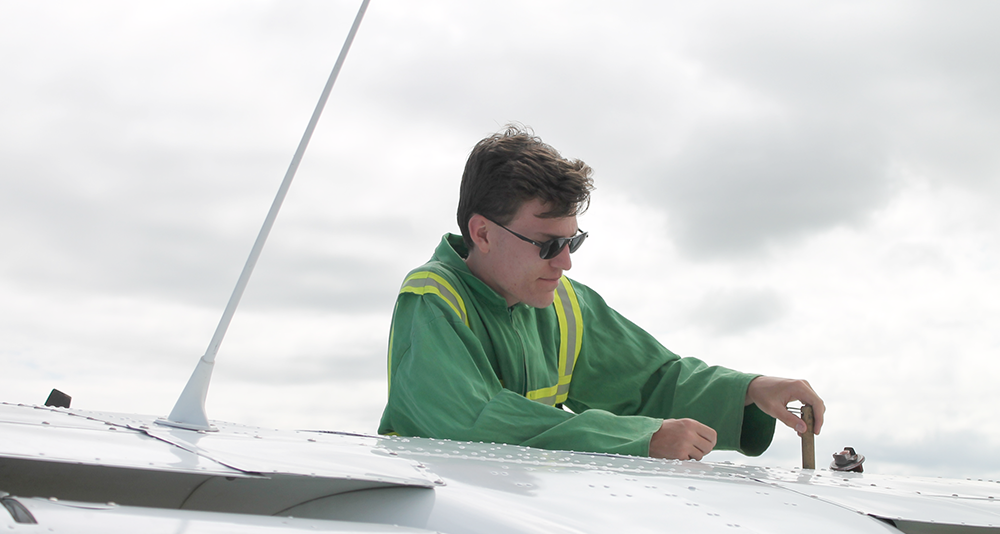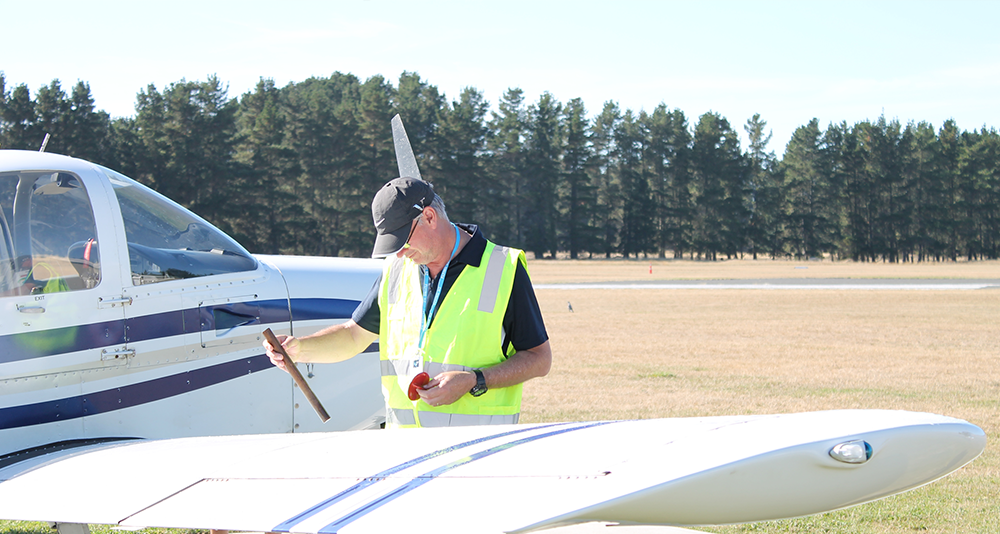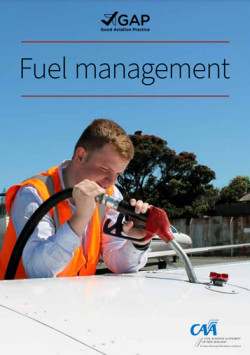These two stories are from the Vector archives. Does this stuff still happen?
A fuel fiasco
An aero club pilot planned to fly a hired Piper Cherokee from Wellington to Rotorua with a number of passengers.
During the preflight, the pilot failed to dip the tanks, only looking at the gauges.
He assumed the tanks were nearly full and entered an endurance of four hours.
A club flight instructor also didn’t dip the tanks but removed the cap and checked their levels, then shortened the endurance by 30 minutes on the flight plan – but didn’t tell the pilot.
As neither had dipped the tanks they couldn’t know the tanks were, in fact, only about 80 percent full, or 2.5 hours of flight.
This was, however, still enough for the planned 1.5-hour flight from Wellington to Rotorua, plus regulatory reserves.
The Cherokee left about 1626 hrs, with ETA about 1816 hrs.
Bad weather and cloud build-up north of Palmerston North forced the pilot to detour, until the journey was so far behind the flight plan, the expiry of the SARTIME was 60 NM south of the destination.
At this point, Rotorua air traffic control advised the pilot to approach from Mt Tarawera, due to cloud cover to the south of the aerodrome.
Taking this into account, the pilot further delayed his ETA to 1830 hrs.
At 1847 hrs, the pilot gave his position as 20 NM south of Rotorua, and his ETA as 1845 hrs (two minutes earlier than his radio call).
At this point, civil twilight had been in effect for six minutes and the pilot was not cleared for night flying.
He soon began having difficulty establishing his position. Two National Airways Corporation pilots began helping via radio.
Rotorua ATC fired a series of flares to help the pilot orientate, but he could not see them.
At 1854 hrs, the pilot stated he had enough fuel to fly until 2026 hrs. But the flight plan transmitted to Rotorua showed empty tanks at 1956 hrs.
One of the NAC pilots directed the Cherokee toward Tauranga, where night landing facilities were to be made available.
At 1913 hrs, the Cherokee pilot reported seeing the lights of Matata, 30 NM east of Tauranga.
Three minutes later, he reported he was out of fuel. The aircraft made a forced landing in shallow water, 15 NM south of Tauranga aerodrome.
All aboard were unharmed.

Photo: CAA / Pen Mackay
No fuel to taxi
A pilot of a Cessna 180 flew from Christchurch to Pomahaka River, Clifton, and then to his cousin’s farm at Pukeawa.
The Cessna was parked on a slope on the farm for two hours. Before start-up the pilot noticed some fuel had drained out.
It was later estimated that three to four gallons had siphoned from one tank into the other, then overflowed.
The pilot didn’t think this would be an issue, and didn’t dip the tanks before his return flight to Christchurch.
He gave an estimated return time of 55 minutes, and fuel endurance as two hours. Not accounting for the fuel loss, the maximum fuel endurance was more likely an hour and a half.
After exactly 55 minutes, the pilot landed at Christchurch and the tower gave the pilot instructions to taxi.
At this point, the pilot informed the tower he had no remaining fuel to do so.
This was the first point anyone, other than the pilot, knew about the aircraft’s fuel exhaustion.
CAA Aviation Safety Advisor Carlton Campbell says parking an aircraft on a slope, however slight, can and does catch pilots unaware.
“If there’s sufficient cross feed – where tanks have this function – to fill and ultimately overflow the lower tank, fuel is lost. If the fuel quantity is not checked between flight legs, this loss isn’t noticed.
“Appropriate positioning of the fuel selector when parked can avoid this problem.”

Photo: CAA/Pen Mackay
Does it happen now?
Well, yes it does. There’ve been 63 reported instances of fuel exhaustion since 2000, including one earlier this year.
A plane with passengers, flying a round trip between Alexandra and Mt Aspiring, suffered engine failure due to fuel exhaustion, as it passed Wānaka.
“Fortunately, they had sufficient height to glide to Wānaka aerodrome and make a safe forced landing,” says Carlton.
However, such incidents are less common than those of fuel starvation – when fuel on board cannot, for whatever reason, get to the engine.
A few years ago, Carlton witnessed, first-hand, an occurrence where a Cessna 207, on a return flight from Milford, suffered engine failure.
“I was about to join from a right base on to runway 23 at Queenstown, when the C207 on final in front of me advised the tower he was landing short, in the rough sandy paddocks neighbouring the Kawarau River.
“I circled to make sure all were okay before continuing to land. Another pilot and I immediately went to the accident site, where it turned out there was plenty of fuel in one tank.
“The pilot had neglected to change tanks in Milford, contrary to company SOPs, and ran the tank dry on the return journey, resulting in fuel starvation.”
John Fogden, director of aviation auditing company Total Quality Aviation, notes that the Cherokee preflight involved at least four of the human factors ‘Dirty Dozen’:
- Departure from norms (dipping)
- Lack of communication (between pilot and instructor)
- Complacency (assumptions made)
- Distraction (route changes).
In the Summer 2022/23 Vector article '50 years of Vector', John said he believes fuel-related incidents are often due to distractions during flight preparation.
“Attending to cellphone calls or responding to other interruptions during preflights, and particularly during refuelling, is a known precursor to critical elements of flight preparation being skipped or omitted.”
John, who’s had 45 years’ experience in aviation, also advised:
“Monitor your fuel and the situation around you. Be prepared to change your plan while the state of your fuel, or your situation, still allows you options.
“If you’ve used up your fuel, you’ve used up your options.
“The only remaining element is luck.”
 For more guidance
For more guidance
Check out our Good Aviation Practice (GAP) booklet on fuel management.
To download:
GAP booklet: Fuel management [PDF 1.4 MB]
To order your own copies:
We also have fuel conversion stickers available for Avgas and Jet A-1.
